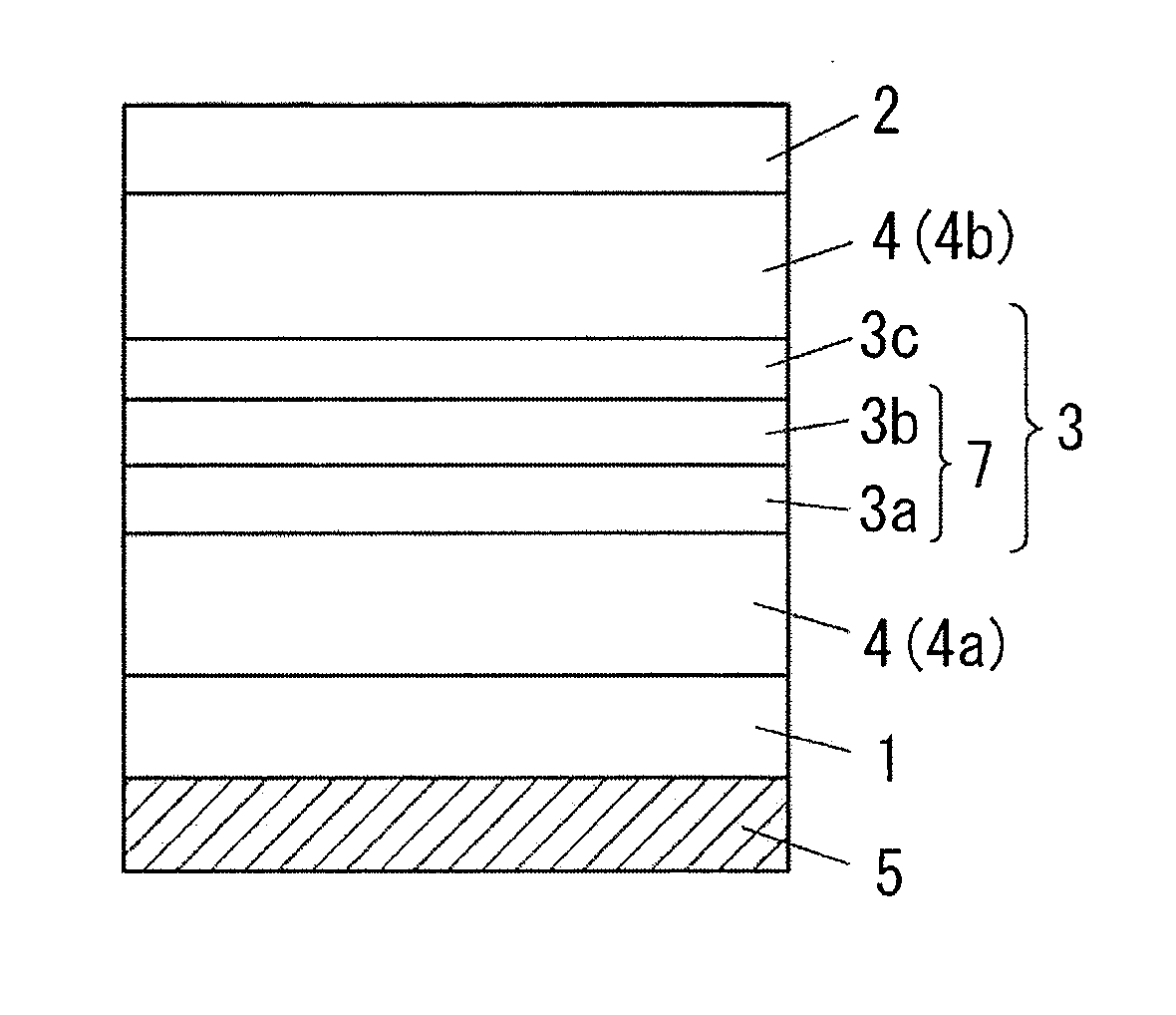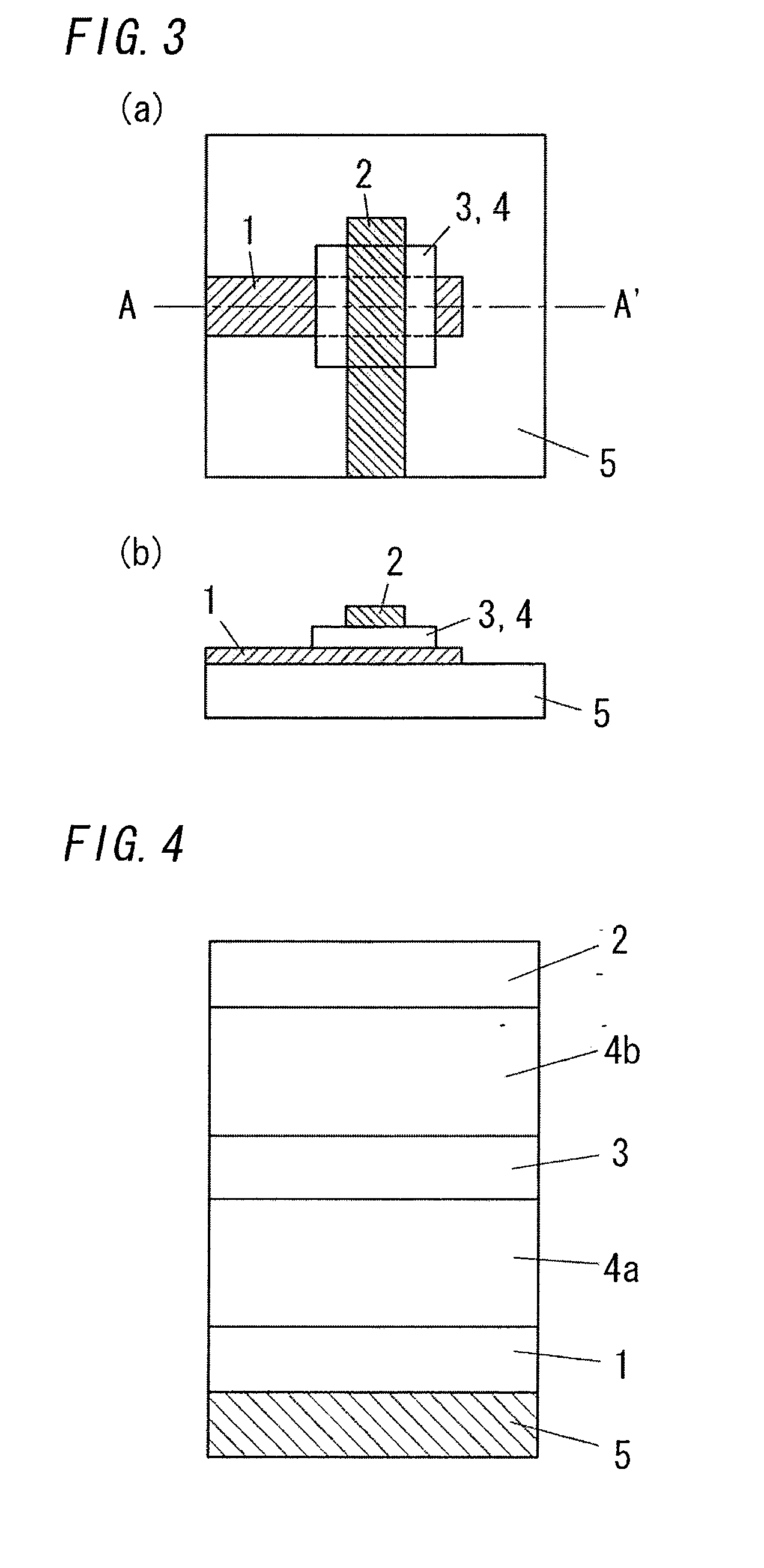Organic electroluminescent element
a technology of electroluminescent elements and organic materials, applied in the direction of solid-state devices, semiconductor devices, thermoelectric devices, etc., can solve the problems of increased operation voltage, undesired increase in voltage, short circuits, etc., to achieve superior long-term durability and lifetime characteristics, and suppress the direct reaction of mixed layers
- Summary
- Abstract
- Description
- Claims
- Application Information
AI Technical Summary
Benefits of technology
Problems solved by technology
Method used
Image
Examples
example 1
[0075]First, as shown by the pattern of FIG. 3, a glass substrate 5 having a thickness of 0.7 mm carrying an ITO film, which has a thickness of 150 nm, a width of 5 mm, and a sheet resistance of about 10 Ω / □, formed as a positive electrode 1 thereon was prepared. The substrate 5 was previously washed with detergent, ion-exchange water, and acetone respectively for 10 minutes under ultrasonication, vapor-washed with IPA (isopropyl alcohol), dried and additionally subjected to UV / O3 treatment.
[0076]The substrate 5 was then fixed in a vacuum evaporator and a film of 4,4′-bis[N-(naphthyl-N-phenyl-amino]biphenyl (α-NPD) and tetrafluoro-tetracyano-quinodimethane (F4-TCNQ) (molar ratio 1:1) having a thickness of 30 nm was formed as a hole-injection layer, on the surface of the positive electrode 1 formed on the substrate 5, by co-vapor deposition in a reduced-pressure atmosphere at 1×10−4 Pa or less. Next, a film of α-NPD having a thickness of 30 nm was formed as hole-transporting layer on...
example 2
[0086]An organic electroluminescent element was prepared in a manner similar to Example 1, except that, in preparation of the mixed layer 3a of intermediate layer 3, a film of BCP having a thickness of 9 nm was first formed on the electron-transporting layer and a film of Li having a thickness of 1 nm was formed thereon, to give a mixed layer 3a containing an electron-donating substance (Li) and an electron-transporting organic material (BCP).
PUM
 Login to View More
Login to View More Abstract
Description
Claims
Application Information
 Login to View More
Login to View More - R&D
- Intellectual Property
- Life Sciences
- Materials
- Tech Scout
- Unparalleled Data Quality
- Higher Quality Content
- 60% Fewer Hallucinations
Browse by: Latest US Patents, China's latest patents, Technical Efficacy Thesaurus, Application Domain, Technology Topic, Popular Technical Reports.
© 2025 PatSnap. All rights reserved.Legal|Privacy policy|Modern Slavery Act Transparency Statement|Sitemap|About US| Contact US: help@patsnap.com



